word cracking morphology training
Learn how to teach English morphology
If you want to teach morphology, this course will give you everything you need to get started.
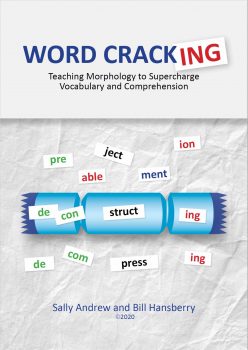
All prices in Australian dollars and include tax where applicable.
Training Add On
Only available to annual members-
Certificate
-
Self-paced eLearning
-
Tier 1, 2 and 3 instruction
-
6-month training access
-
Videos and practical exercises
-
Half-day Professional Development
Individual Training
Bonus 12-month membership-
Certificate
-
Self-paced eLearning
-
Tier 1, 2, and 3 instruction
-
12-month training access
-
Videos and practical exercises
-
Half-day Professional Development
School Training
In school or via Zoom-
Face-to-face training
-
Zoom or face-to-face in Adelaide
-
Certificate for each attendee
-
Tier 1, 2 and 3 instruction
-
Customised for your school needs
-
Half-day PD
What you will learn about morphology
The course assumes you are a beginner and takes you step-by-step, including what morphology is, why it is so important and how to teach it in the classroom (Tier 1 & 2) and intervention settings (Tier 3).
This training course aims to provide participants with an understanding of what morphology is and how to teach it. It includes detailed information about the rules of how words are formed, how they function, and why this improves vocabulary, reading and comprehension skills.
Key learning outcomes include:
- Understanding how to teach morphology to Tier 1, 2 and 3 students in the classroom and intervention settings.
- Understanding the different parts of words and how they function, such as roots, prefixes, and suffixes.
- Developing the ability to analyse and identify the different parts of words and understand their meanings.
- Understanding the relationships between words and their meanings, such as how changes to a word’s structure can change its meaning.
- Developing the ability to use knowledge of word structure to understand and analyse new words.
- Developing the ability to use knowledge of word structure to improve vocabulary and reading comprehension.
- Understanding the big four spelling rules of word formation.
- Recognize, extract, and analyse morphemes in words.
- Apply morphology knowledge to improve spelling, reading, and writing.
- Understand the etymology of words and how it relates to their current usage.
Course Content
When delivered face-to-face, the course takes approximately 3.5 hours. We estimate that it might take a similar amount of time to complete the online training, but it will depend on how quickly you move through it and how long you take to do the practical exercises. There are approximately 2.5 hrs of video content in the online training.
- The basics of morphology
- Word analysis
- The importance of teaching morphology
- Morphology to improve spelling
- How to teach morphology in intervention (Tier 3)
- How to teach morphology in the classroom
- Safe ending patterns
- The 1-1-1 doubling rule
- The Drop ‘e’ rule
- ‘UE’ words
- The “Y Rules
- ‘Ie’ words
- The doubling rule (part 2)
- Diagnostic dictations
- Grammar
- Card drills
- How to teach suffixes with the word cracker
- Morphology Games
- How to teach prefixes with the word cracker
- Spelling analysis
- Bases and roots
- Matrices
- Student activities and games
- Quizzes and practical challenges throughout
With easy-to-follow videos, plenty of practical exercises, the ability to work at your own pace, and the ability to revise concepts as often as you like, this course will set you and your students up for success.
Course presenters
Bill Hansberry

Sally Andrew

Sally holds a Postgraduate Diploma in Dyslexia and Literacy from the University of York, UK. Sally has been tutoring students with dyslexia for 20 years and has trained many parents and educators in evidence-based multisensory interventions for dyslexia. Sally is the director of By Your Side Tutoring.
Sally runs the popular Teaching Students with Dyslexia (TSD) suite of training for Specialist Multisensory Literacy Teachers. Sally co-developed the Word Cracker suite of morphology resources with Bill Hansberry.
The benefits of the Word Cracking system
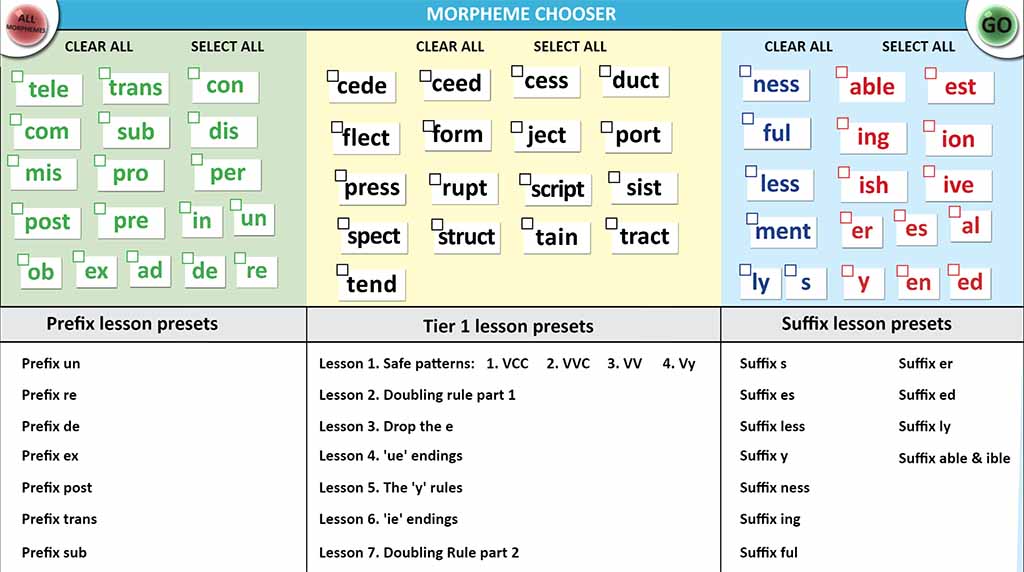
Less preparation time
Means you can focus on teaching.
English is complex. Don’t waste your precious teaching time re-inventing the wheel. Word Cracker is a complete morphology program with every lesson and every teaching point designed and built by structured literacy experts.
Whole school consistency
Every teacher reinforcing the same ideas and concepts.
Students need high-quality, consistent instruction across the board. Word Cracker allows them to move from teacher to teacher, subject to subject and year to year without having to learn new terminology and meta language.
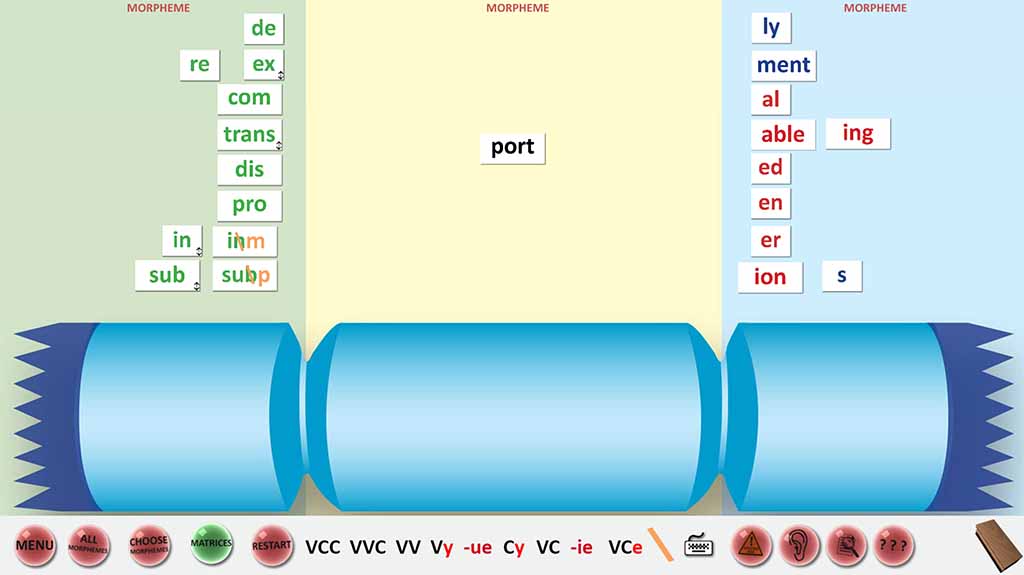
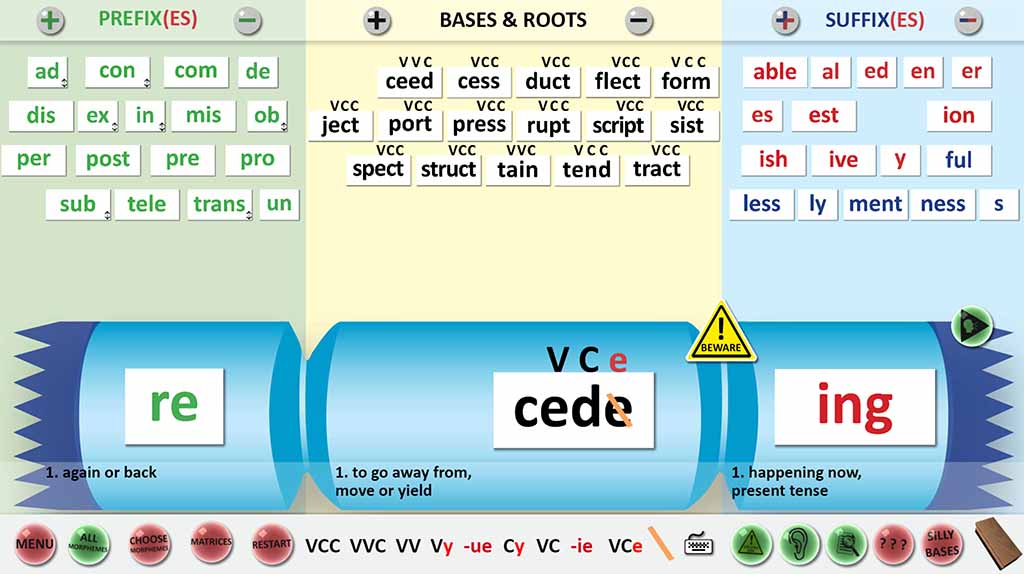
Complex spelling made easy
Instant patterning, definitions and text to voice at your fingertips.
It is difficult to think on your feet and recall the meaning of every morpheme, or pattern a word, while trying to manage a class and deal with random questions!
Imagine having every morpheme definition at your fingertips or automatically detecting safe and dangerous end patterns. Word cracker lets you do this with the click of a button.
Teach your way or follow the suggested sequence
A set structure doesn't stop you teaching your way
Word Cracker has a detailed and structured sequence for teaching morphology. But it also gives you complete control over the morphemes you want to use. Choose any combination of the built-in morphemes and lessons, or make your own by typing straight onto the cracker.
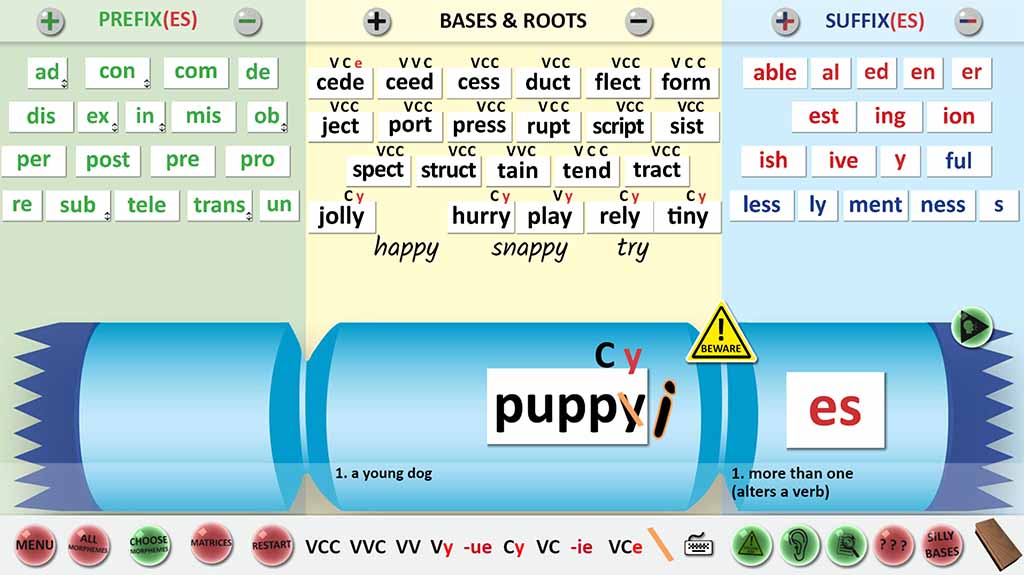
Included in your membership
Word cracker access

Interactive Word Cracker with 45 inbuilt presets and matrices
28 lesson presets
The ability to create custom prefixes, bases, roots and suffixes
Safe and dangerous word patterns indicator
Built-in morpheme definitions
Random affix generator that kids love!
Text-to-voice feature for morphemes and custom words
Access to new exciting features when they are available
Classroom Lesson plans
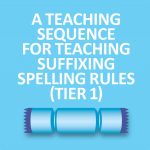
A comprehensive sequence for teaching suffixing
25 Lesson plans for whole-class instruction
7 step spelling rule sequence
11 suffixing lessons
7 prefix lessons
Lesson presets, including suggested bases and roots for each teaching point
Classroom vocabulary building exercises
Downloadable templates
Playberry™ Tier 3 intervention integration
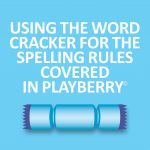
Playberry™ spelling rules chart
Playberry™ teaching point references
Playberry™ modification suggestions
Playberry™ sequence built into lesson presets
Access to Word Cracker Teachers facebook group
Downloadable templates
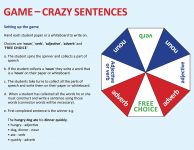
Complete spelling rules chart
Blank spelling rules chart for student use
Blank word cracker printable templates
Tier 3 spelling rules teacher reference chart
12 game templates
Ideas for class vocabulary building booklet
More templates and plans coming soon!
What our users say
The online Word Cracker has been useful, particularly when teaching to the whole class.
As a Year One teacher, it has been a tool which I have used as a part of my literacy routine to explicitly introduce morphology at a foundational level.
The beauty of the online wordcracker is that it is easy to use and quick to access using IWB. The wordcracker lines up with the wordcracker training and resource book allowing me to use it to explicitly teach both morphology and relative spelling rules to the whole class with ease.
The pre-set board setups have been fantastic as it allows me to quickly setup the board ready to teach a given spelling rule for example dropping the e when adding a vowel suffix. Not only has this been time saving for me as a teacher but also it allows for quick review of rules taught.
The students love the online wordcracker and even in a Year One classroom. We often find ourselves exploring roots and their morphology and how adding different suffixes and prefixes can make multiple different words.
I am currently building this into my explicit literacy block and the wordcracker means that I can access some morphology quickly using a familiar resource (the wordcracker). This means I can quickly expose students to new learning and reveiw this through the week which I have found has been the most effective way of addressing morphology at a foundation level.
Jared Centenera, Saint Ignatius College, South Australia
This year was an amazing one working with my Year 2s who love the Word Cracker sessions in our Daily Review.
We are an MSL school and we also incorporate other ways of teaching Reading and Writing. The students are using their learnt MSL skills and applying these when using prefixes, suffixes and base words. I have been including Word Cracker in our lessons predominately for exposure and the children always want to learn more about prefixes and suffixes they have not learnt yet.
For example, one of our Words of the Day was ‘grace’. The students then wanted to workshop how to separate the part of the word for graceful and gracefully and then came up with ungraceful, and ungracefully, and it even extended to using -ness. This then went off on a tangent to ‘messy, busy’ and they remembered when we incidentally learned about dropping the y to add /i/ to add -ness when we had these as irregular words.
They have become stronger readers and spellers as they have been using the Word Cracker PD. It is such a valuable resource, even at this younger level. I ended up taking the middle primary Word Cracker whiteboards and was using them with the Year 2s.
Elenor Pletsias, Oakleigh Primary School, South Australia
